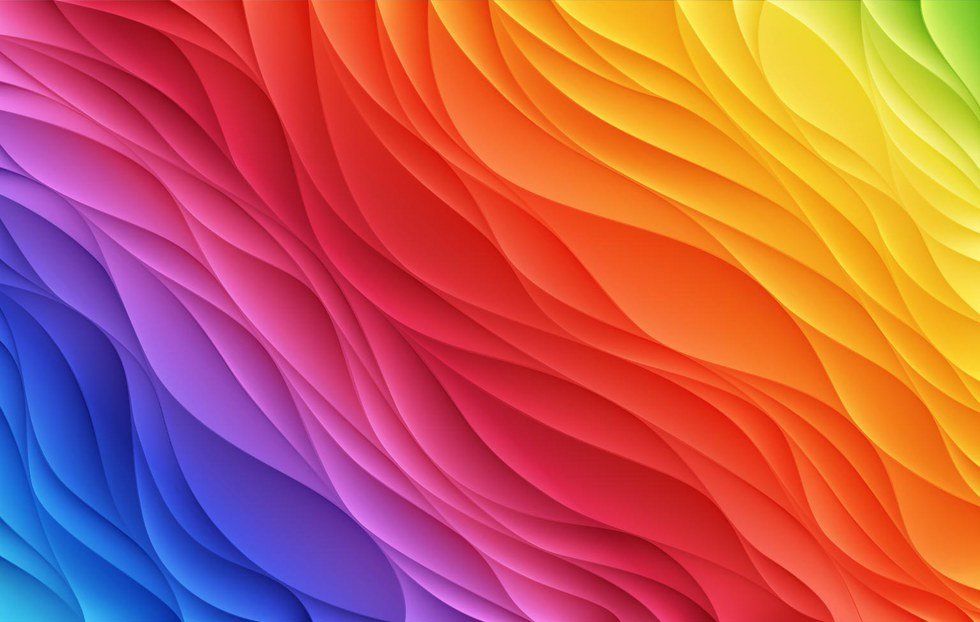Flashback to January 2011 – a suffusing of pale, pale gray.
My first high school dance, Snowball 2012 – steely blue layered with red and purple. Playing in the front yard of my first home with my sister and babysitter – vibrant yellow with grass green and sky blue. Leaving college in 2015 – black. Graduation from high school – scarlet, orange, and lemongrass. Stargazing – midnight blue with flashes of purple.
From the moment I began learning at A.G. Montessori School in Fayette County, PA – brick red and beige – I sensed a pattern of formalized retention that I would later learn to identify as visual learning. To all the auditory learners in the audience, I commend you on your exceptional linkage between ear and brain. The degree of retention and precision possible from simply listening to material absolutely befuddles me. To all the motor (hands-on) learners in the audience, I applaud your tenacity in gradually gaining skill to finely manipulate the world around you. The closest brush with motor learning that I have experienced is likely my journey with the alto saxophone, and even then, I am not a particularly talented musician. In Boy Scouts, the myriad knots presented roadblocks to no end.
However, give me an organized illustration of each step, and, with practice, I will tie you a superb knot. (Thankfully, the Boy Scouting Handbook provided this valuable stimulus.) I certainly conform to many of the well-known characteristics of visual learners. Diagrams, flow charts, graphs, hand-written pictures (as sloppy as they might be), and essentially anything presenting complex material in a stratified, sharply defined manner excite my neurons for ready uptake and long-term storage. This phenomenon has aided me particularly in my academic pursuits in biology (green, purple, and gold), chemistry (crimson and emerald), and physics (maroon), as these disciplines’ principles do not simply rely on but rather are products of existence in a three-dimensional space. Studying from this point of view, especially in organic chemistry, lends itself to a deep appreciation of the universe’s beauty and exactness in exactly how things are put together. For instance, in introducing a project involving research and presentation of a set of two chemical compounds known as enantiomers, my high school organic teacher told us that the active ingredient in Vicks® VapoRub™ is identical to methamphetamine (yellow and tan, the latter like brown sugar), the illegal psychoactive substance, in all but a single aspect. The three-dimensional arrangement of things about a single carbon atom determines whether this molecule takes the form of a decongestant in a popular consumer brand or of a substance that stimulates the nervous system, decays teeth, ruins futures, and takes lives. If that cannot exemplify nature’s precision of minutia, I don’t think anything can.
I do experience something else, though, probably an extension of the visual learning orientation, but perhaps not. Every recovery of memory, whether before a friend, family member, stranger, or psychotherapist or counselor, intertwines itself with a color or combination thereof. It’s quite difficult to describe. Maybe you remember or mentally create things differently, but when you do, picture that picture in your mind. In the simplest sense, in my mind, that picture has color. I am not referring to the remembrance of the true colors of the things I visualize; that happens, too, but separately. Sometimes there is overlap between the colors of individual features and the color of the memory, but sometimes not. When I recall something, an entire haze or filter characterizes the entire memory. If I desire, I can “zoom in” to make a guess at the articles’ actual color, but with the general view, I see an overarching hue. The fact that the colors are completely consistent from instance to instance interests me, as well. For example, when I thought of my first day of work at Chipotle last year, I saw silvery blue and yellow-orange, which I still do today. You might think, Well, you could just enforce a color on a memory to make it consistent, but I assure you that this is not the case. The memories themselves have color like distinct objects. If I described my junior prom with purple, not with light green, dandelion, and near-black violet, as it appears to me, then I might as well attribute purple to an orange; it just doesn’t work.
What does this mean for me? Frequently, the colors help to tell me about my feelings during that experience. Certain shades, not separate colors, appear with specific feelings and emotions, but the lines blur sporadically. For instance, the ride on the way back from a Boy Scout robotics class at California University of Pennsylvania and the observation of the sunset on the porch swing of my first home share a yellow-red-orange gradient (yes, in this instance, the sunset colors overlap with the memory’s color, but the sun was still far above the horizon during the drive). However, for the former, this pulsating range evokes eagerness and fortune, a sense of accomplishment with yet more excitement. For the latter, it represents anxiety, an urgency about the order of the day, a strained worry for time to continue.
The first time I tried to describe this to someone, I believed I would encounter a variation in the colors I perceived between remembrances and then report this, but I startled myself in saying, after much introspection, “…I actually can’t say that I do.” Does this mean that, even as I grow, I don’t truly mature, that my opinions of the past and the lessons that I ultimately expunged from those tribulations don’t develop? Maybe, but I sincerely doubt it. I spend enough time pondering my history to know the mistakes that I once made but shan’t any longer as consistently as possible. My best guess is that my mind honestly views my days on Earth as just that, a history, and history does not change. In a history textbook, written by a single, unanimously biased or opinionated set of authors, nothing changes. A question could return the same answer with every inquiry because the bias remains constant. We perceive every existence and action with bias thanks to our amazingly complex yet unfortunately subjective brains, but within a single brain, analogously, that query would return the same result each time. It is comforting, in a sense, to know that even as I will grow older and lose the ability to recall the finer intricacies of my most chronologically distant memories, my brain preserves the feelings, the most vital aspect, in a rather formulaic manner. If we are all just products of our past, then I am the eventuality of these colors. Someday, I hope, I will reach a pinnacle of wisdom and so live life as a rainbow.



















